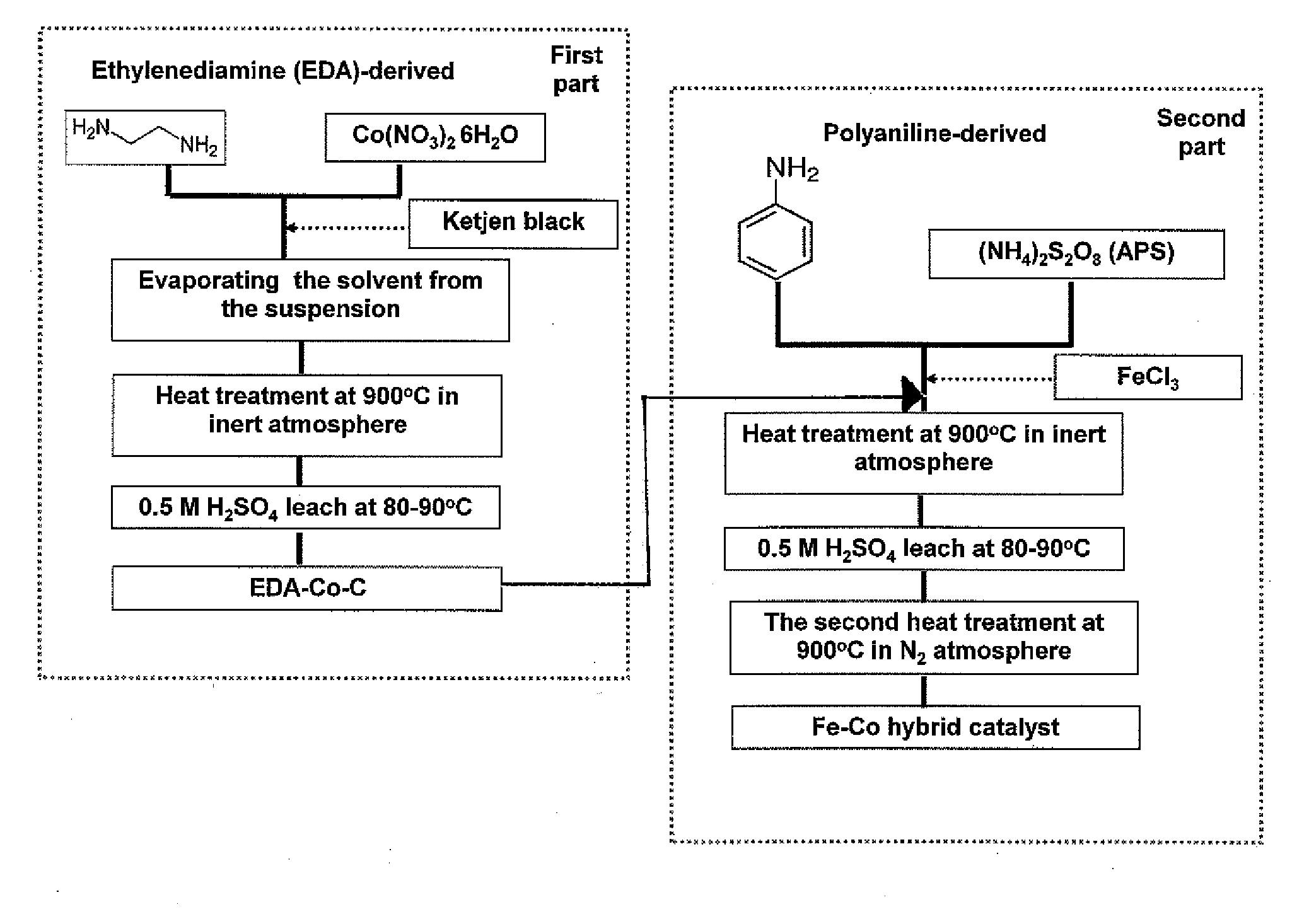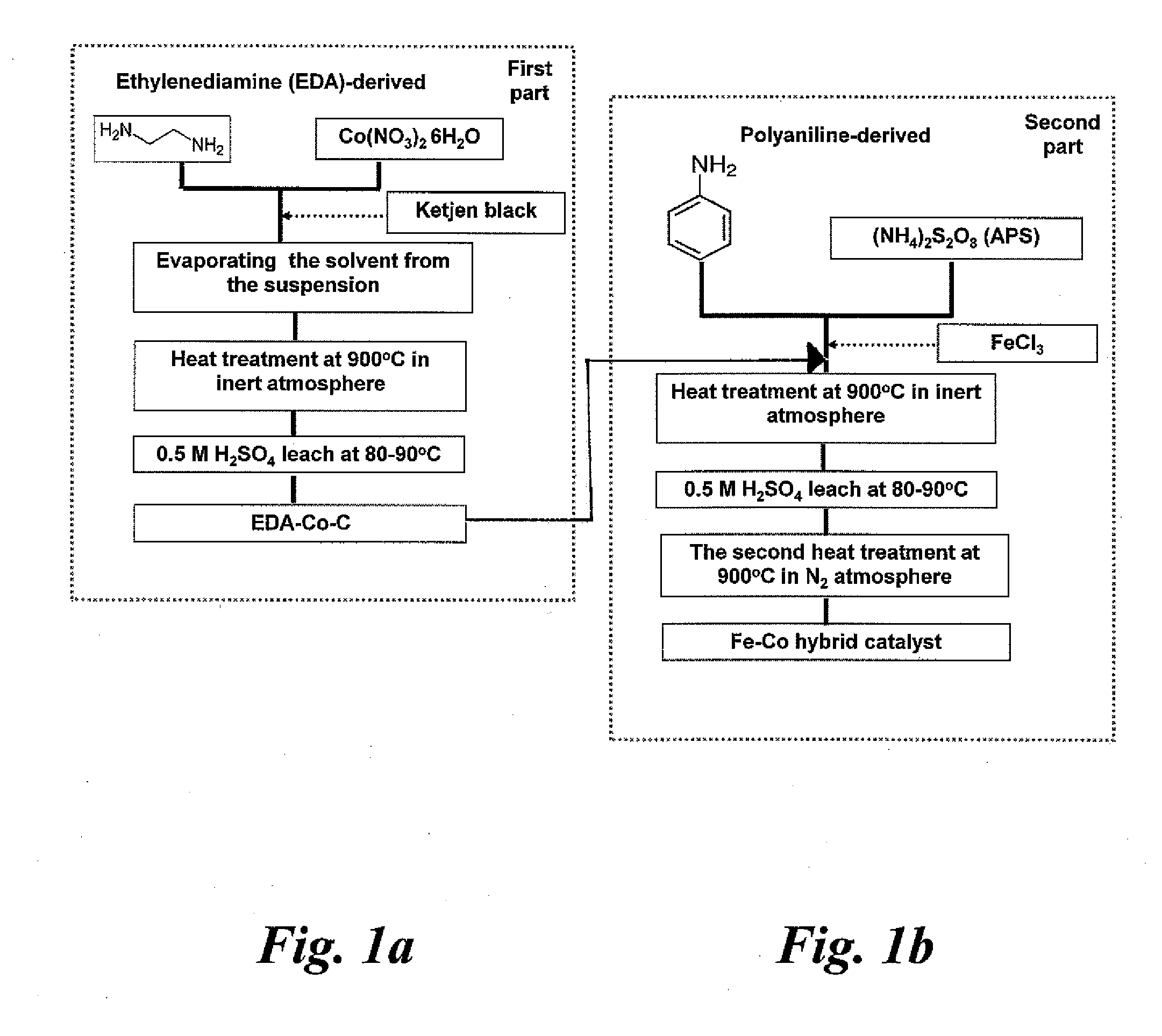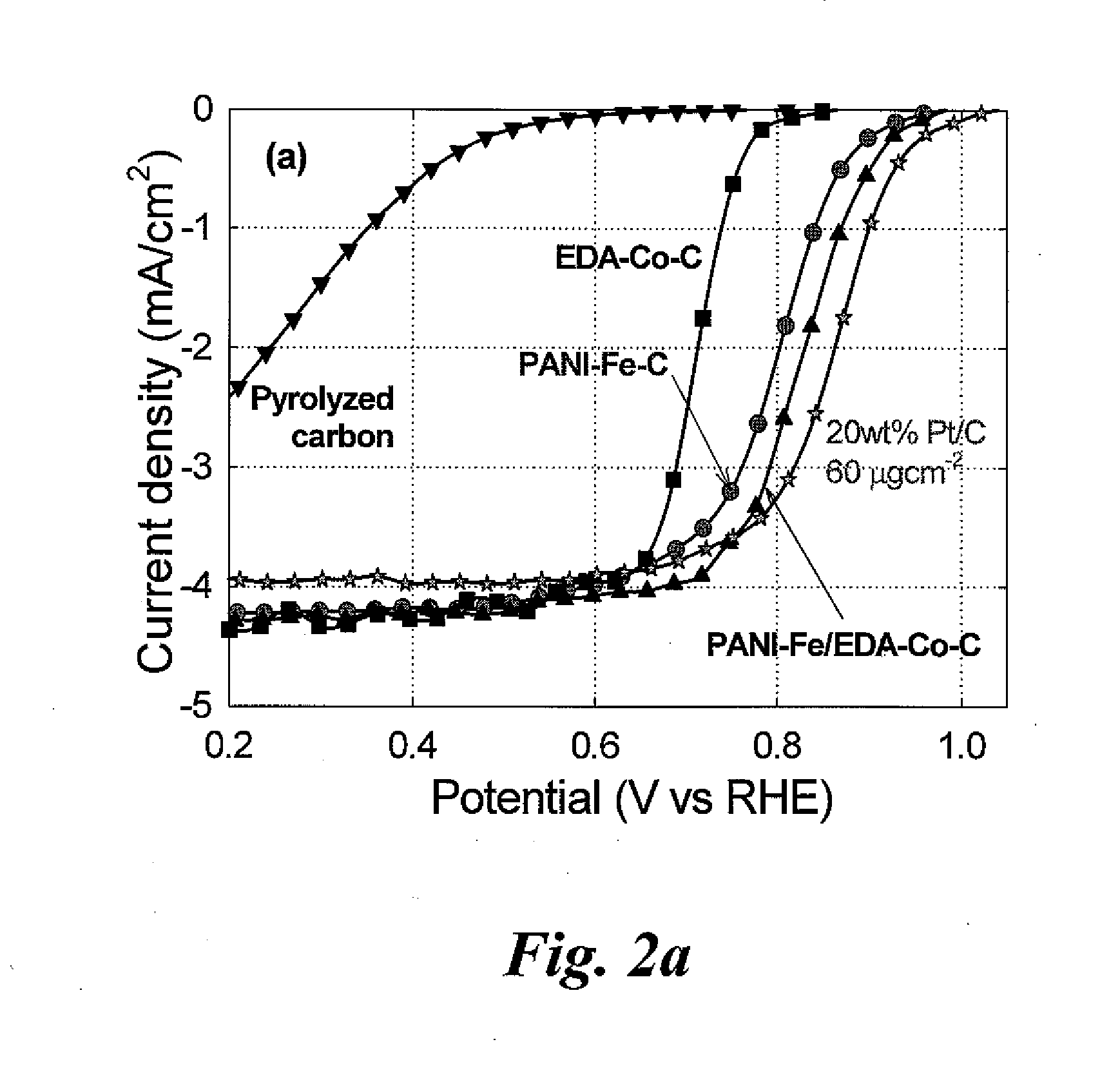Nitrogen-doped carbon-supported cobalt-iron oxygen reduction catalyst
a cobalt-iron oxygen reduction and catalyst technology, applied in the direction of physical/chemical process catalysts, cell components, conductors, etc., can solve the problem of difficult to achieve large-scale practical application of fuel cells, and achieve the effect of narrowing the performance gap with platinum
- Summary
- Abstract
- Description
- Claims
- Application Information
AI Technical Summary
Benefits of technology
Problems solved by technology
Method used
Image
Examples
Embodiment Construction
[0033]The present invention relates to catalysts useful in polymer electrolyte fuel cells. The invention also relates to polymer electrolyte fuel cells containing the catalysts and catalyst supports. The present invention further relates to methods of making the catalysts and catalyst supports.
[0034]In all embodiments of the present invention, all percentages are by weight of the total composition, unless specifically stated otherwise. All ranges are inclusive and combinable. All numerical amounts are understood to be modified by the word “about” unless otherwise specifically indicated.
[0035]All documents cited in the Detailed Description of the Invention are, in relevant part, incorporated herein by reference; the citation of any document is not to be construed as an admission that it is prior art with respect to the present invention.
[0036]To the extent that any meaning or definition of a term in this document conflicts with any meaning or definition of the same term in a document...
PUM
| Property | Measurement | Unit |
|---|---|---|
| temperature | aaaaa | aaaaa |
| temperature | aaaaa | aaaaa |
| onset oxygen reduction potential | aaaaa | aaaaa |
Abstract
Description
Claims
Application Information
 Login to View More
Login to View More - R&D
- Intellectual Property
- Life Sciences
- Materials
- Tech Scout
- Unparalleled Data Quality
- Higher Quality Content
- 60% Fewer Hallucinations
Browse by: Latest US Patents, China's latest patents, Technical Efficacy Thesaurus, Application Domain, Technology Topic, Popular Technical Reports.
© 2025 PatSnap. All rights reserved.Legal|Privacy policy|Modern Slavery Act Transparency Statement|Sitemap|About US| Contact US: help@patsnap.com



